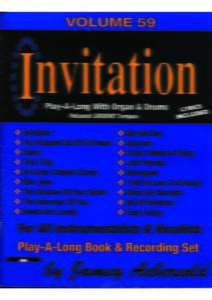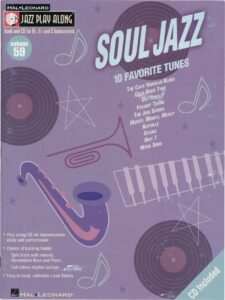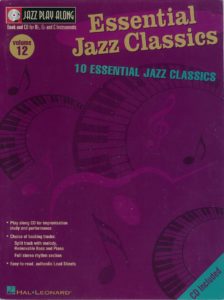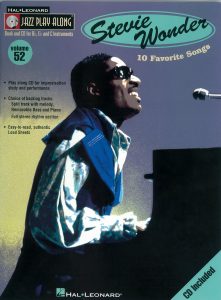Table of Contents
Come join us now, and enjoy playing your beloved music and browse through great scores of every level and styles!
Can’t find the songbook you’re looking for? Please, email us at: sheetmusiclibrarypdf@gmail.com We’d like to help you!
Softly, as in a Morning Sunrise (Background Track) sheet music, Noten, partitura, spartiti, 楽譜
Best Sheet Music download from our Library.

Please, subscribe to our Library.
If you are already a subscriber, please, check our NEW SCORES’ page every month for new sheet music. THANK YOU!
The Eternal Flame: Unpacking the Jazz Standard “Softly, as in a Morning Sunrise”
More than just a beautiful melody, “Softly, as in a Morning Sunrise” stands as a cornerstone of the jazz repertoire, a harmonic playground, and a masterclass in lyrical irony. Born in the unlikely cradle of operetta, it transcended its origins to become a vital vehicle for improvisation, beloved by generations of jazz giants for its evocative mood, sophisticated chord changes, and enduring emotional resonance. Its journey from Broadway stage to smoky jazz club encapsulates the transformative power of the genre.

Operetta Origins: A Flame Ignited in the Desert (1928)
The song premiered in the 1928 Sigmund Romberg operetta The New Moon, with lyrics by the legendary Oscar Hammerstein II. Set against a backdrop of 18th-century French Louisiana and New Orleans, the plot involves revolution, romance, and mistaken identities. Within this framework, “Softly, as in a Morning Sunrise” is sung by the character Marianne, a French aristocrat, as a passionate soliloquy reflecting on a love that burns intensely despite its forbidden or dangerous nature.
Here lies the first layer of fascination: the profound irony between the title/initial melody and the lyrics. Hammerstein’s words speak not of gentle dawns but of consuming, potentially destructive passion:
“Love came to me, gay and tender,
Love came to me, sweet surrender.
…
We kissed and sealed the pact,
Madly the vows we made.
Vows that we never would break,
Vows that we broken have.”
The imagery is stark: “a flaming torch,” “burning flesh,” “a wound that will not heal.” This is a song about reckless, all-consuming love, betrayal, and lingering pain. Yet, Romberg sets it to a melody that begins with a sense of serene, almost fragile, beauty – rising gently like the sun itself, predominantly in a haunting A-minor key. This inherent tension – the calm, evocative surface versus the turbulent, passionate undercurrent – became fertile ground for jazz interpretation.
Musical Architecture: A Harmonic Playground
What makes “Softly” so irresistible to jazz musicians? Its musical structure is deceptively sophisticated:
- Minor Key Foundation: Primarily in A minor, establishing an immediate sense of melancholy, introspection, or dramatic tension – a perfect canvas for jazz expression.
- The “Romberg Rhythm”: The melody frequently employs a distinctive rhythmic figure: a dotted eighth note followed by a sixteenth note (often on the words “Soft-ly” and “Sun-rise”). This subtle lilt adds character and a touch of sophistication.
- Rich Harmonic Progression: While rooted in traditional harmony, the chord changes offer rich possibilities:
- Strong ii-V-I Movements: The backbone of jazz improvisation appears frequently (e.g., Bm7b5 – E7 – Am).
- Unexpected Modulations: The bridge (“Love came to me…”) dramatically shifts to the relative major (C major), offering a bright, contrasting section before plunging back into the minor intensity. This shift provides a crucial dynamic arc.
- Descending Basslines: Sections feature evocative chromatic descents in the bass, creating movement and tension (e.g., Am – Am/G – Am/F# – Fmaj7).
- Tritone Substitutions & Reharmonization Potential: Jazz musicians quickly exploited the inherent possibilities for substituting chords (like using Db7 instead of G7 leading to C major) and completely reharmonizing sections to create new textures and tensions. The minor key and specific progressions lend themselves beautifully to modal exploration as well.
This combination – a memorable, evocative melody over harmonically rich and flexible changes – is catnip for improvisers. It provides both a strong framework and ample space for individual expression.
Crossing Over: From Operetta to Jazz Standard (1930s-1940s)
The transition from showtune to jazz standard wasn’t instantaneous but gained significant momentum in the 1930s and 1940s. Early popular recordings by artists like Bing Crosby helped familiarize the tune. However, it was the jazz musicians who truly unlocked its potential:
- Swing Era: Big bands like Artie Shaw’s featured arrangements, adapting its drama to the swing format. Shaw’s 1938 recording, featuring his clarinet, was particularly influential.
- Bebop Revolution: The harmonic sophistication of “Softly” made it a natural fit for the bebop innovators. Musicians like Charlie Parker and Dizzy Gillespie would have undoubtedly explored its changes in jam sessions, appreciating its chordal density for complex improvisation.
- Cool School: Its inherent lyricism and minor mood resonated deeply with the emerging “Cool” aesthetic of the late 1940s and 1950s.
Iconic Interpretations: Forging the Jazz Legacy
“Softly” truly cemented its jazz status through definitive recordings by titans of the art form:
- Sonny Rollins (1957 – Newk’s Time): This is perhaps the most influential jazz version. Rollins attacks the melody with robust, bluesy authority on tenor saxophone, then launches into astonishingly inventive and powerful improvisations over the changes. His version is a masterclass in thematic development, rhythmic drive, and harmonic navigation, setting a high bar for all who followed.
- John Coltrane (1963 – John Coltrane and Johnny Hartman): In stark contrast, Coltrane offers a ballad interpretation of breathtaking tenderness and depth. Paired with Hartman’s rich baritone vocals (who delivers Hammerstein’s lyrics with poignant resignation), Coltrane’s soprano saxophone weaves lyrical, modal-inflected lines that capture the song’s inherent beauty and underlying sadness. This version highlights the tune’s profound emotional core.
- Art Blakey & The Jazz Messengers (1958 – Moanin’): Featuring the blistering trumpet of Lee Morgan and the soulful tenor of Benny Golson, this version pulses with hard-bop energy. Blakey’s thunderous drums drive the tempo, showcasing the tune’s ability to handle fiery, up-tempo treatment while retaining its harmonic intrigue.
- Chet Baker (1954 – Chet Baker Sings): Baker’s trademark fragile, intimate vocal delivery paired with his lyrical trumpet perfectly captures the song’s initial sense of vulnerable beauty and underlying melancholy. His version emphasizes the romantic yearning hinted at beneath the operatic drama.
- Bill Evans (1961 – Sunday at the Village Vanguard): Evans, the master pianist, approached the tune with his signature impressionistic harmony and introspective lyricism. His trio versions are studies in subtlety, exploring the rich harmonic colors and rhythmic nuances with profound sensitivity.

Later Explorations and Enduring Appeal:
The song’s journey didn’t stop in the 60s. It has been continuously reinterpreted:
- Oscar Peterson: Brought his virtuosic piano pyrotechnics and swing to it.
- Keith Jarrett: Explored its depths in his solo piano concerts, with sprawling, introspective renditions.
- Brad Mehldau: Applied his contemporary harmonic language and complex rhythmic concepts.
- Contemporary Artists: Continues to be a staple for vocalists (from Ella Fitzgerald to Kurt Elling to Cecile McLorin Salvant) and instrumentalists across the spectrum, from traditional to avant-garde.
Why It Endures: The Eternal Flame
“Softly, as in a Morning Sunrise” possesses a rare alchemy that ensures its permanence in the jazz canon:
- The Irresistible Tension: The core irony – serene melody/title vs. passionate, often dark lyrics – provides endless interpretive possibilities. Musicians can emphasize the beauty, the pain, the drama, or the complex interplay of all three.
- Harmonic Riches: Its chord changes are sophisticated yet fundamentally strong, offering a perfect balance of structure and freedom for improvisers. It’s a tune that rewards deep study and invites creative reharmonization.
- Emotional Depth: It taps into universal feelings of passionate love, longing, betrayal, and melancholy – emotions that jazz expresses so powerfully.
- Melodic Strength: Despite its harmonic complexity, the core melody is instantly recognizable, beautiful, and satisfying to play. It provides a solid anchor for even the most adventurous solos.
- A Rite of Passage: Learning and mastering “Softly” is a significant milestone for jazz musicians. Its challenges and rewards make it an essential part of the repertoire-building process.

More Than Just a Sunrise
“Softly, as in a Morning Sunrise” is far more than a relic from a forgotten operetta. It is a dynamic, living entity within jazz. From Sonny Rollins’ fiery declaration to Coltrane and Hartman’s intimate lament, from Art Blakey’s hard-driving pulse to Bill Evans’ delicate introspection, the song has proven itself infinitely adaptable, capable of reflecting the unique voice of every artist who engages with it. Its enduring power lies in that perfect storm: a hauntingly beautiful minor-key melody, harmonically fertile ground ripe for exploration, and that fundamental, compelling tension between the promise of a gentle dawn and the reality of a love that burns like an eternal, sometimes painful, flame. It remains not just a standard, but a challenge, an inspiration, and a timeless vessel for the profound emotional language of jazz.

Browse in the Library:
Or browse in the categories menus & download the Library Catalog PDF:
